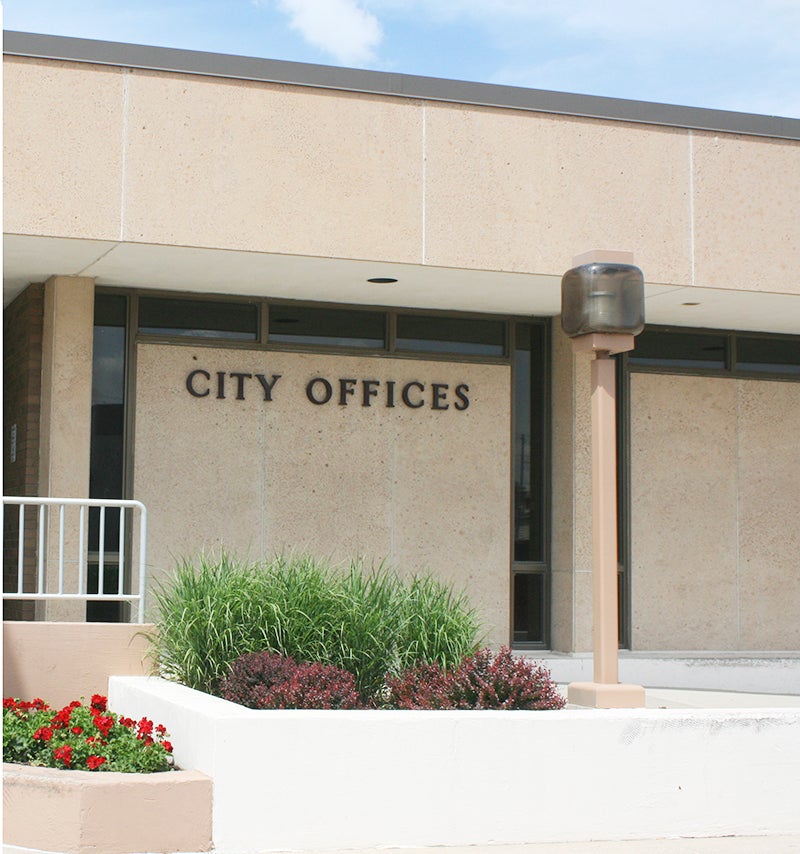City begins to explore reconfiguring City Hall, library
Published 5:11 am Thursday, March 24, 2022
|
Getting your Trinity Audio player ready...
|
The city of Albert Lea is beginning to explore options to update City Hall and incorporate the space previously occupied by the Fire Department, while bringing better security and efficiency for both employees and residents.
The city in 2021 hired Oleson + Hobbie Architects out of Mankato to meet with staff and discuss space needs, looking at things such as crowding in the engineering and building services office, as well as needs of the library and public access, security, well-being and storage.
City Manager Ian Rigg said the purpose of bringing in the architect firm was to evaluate the building and potential costs so the city does not spend money on certain updates now and then later have to spend more money removing those fixes to meet another need.
“We need to determine what would be the cost to create a more efficient space,” Rigg said. “We have unused spaces in some areas and overcrowding in other areas that are not simple fixes due to the 1960s floor plan.”
He noted the current layout is inefficient and unfriendly at times for users of the library, as it is split on two floors.
There are also security risks that need to be addressed. He referenced female employees who have been followed to the restrooms by men from the common area and said the restrooms in the common area for a long time are the only available restrooms to some staff.
Some of the baseline needs the city asked the firm to include were a basic maintenance update, part of which has been in the city’s capital improvement plan for several years; a breakroom with restrooms and a wellness room for staff; a new locking system; and a less crowded and safer working space on the lower level of the building.
Some of the additional concepts it looked at were creating a more efficient space for the library that may reduce costs and improve services, removing dead space in the building and creating better control points, creating a properly sized IT control room and training rooms, and creating a usable community space not specific to any department.
The firm also looked at allowing for future staffing and equipment efficiencies and allowing for growth in the building services department or elsewhere.
“Whether it is worth the price tag is something the council will take significant time reviewing,” Rigg said.
Rigg presented three preliminary options for the space during the council’s work session last week prior to the regular meeting. The city manager said he hopes to gain the council’s input about the ideas over the next few months.
“We are taking serious the taxpayers’ money, which is why we looked into these options before spending money on the old fire quarters and also kept the exploration costs as minimal as possible,” he said.
The first option looked at basic lighting and ceiling grid updates, flooring replacement in worn areas, adding a break room with a wellness room and restrooms, putting storage or a conference room in the old sleeping quarters for the fire department and adding security windows, doors and locks.
The cost is estimated at $1.213 million. To move the building services department across the hall on the lower level and partially convert a portion of the garage space on the lower level would be an estimated $260,000 more.
City Councilor Jason Howland asked if there needed to be a garage in the building at all or if all of that space could be incorporated. He also referenced the concern about fumes in the garage space that were problematic when the space was used by the fire department.
The second option looked at moving the library all to the middle level, adding a break room on the third floor, moving IT controls, putting in place one-point access for customers inside the upper level of the building, moving the council chambers to the opposite end of the upper level and incorporating shared floor concepts for office space.
Rigg said there would be significant costs to support the library floor, but there could be savings in staff and equipment through the shared floor concepts. The cost estimate for this option was $4.126 million.
The third option looked at having the library all on the top level, which would include more costs for support beams for the library floor. The administration would move to the second level.
This option was estimated at $5.246 million.
Rigg said staff are recommending the second option, as it would provide the best option for emergency response and general security and would give more options with staffing and services for the library.
He noted there could be some operational savings to counter the construction costs and said he thought the changes would create the chance for faster service for the public. There also might be the opportunity to reduce staff through attrition with more efficient workspace.
First Ward Councilor Rich Murray asked how many employees were in the engineering and building services departments.
Rigg said there were currently six in engineering and four in inspections.
Taking into account other savings and cost shares, the cost of the upgrades could be as low as a half percent to 2% levy impact, he said. There are also reserves, grants and other options to reduce the costs.
Rigg emphasized the proposals are preliminary and they provide a first look at what can be done.






